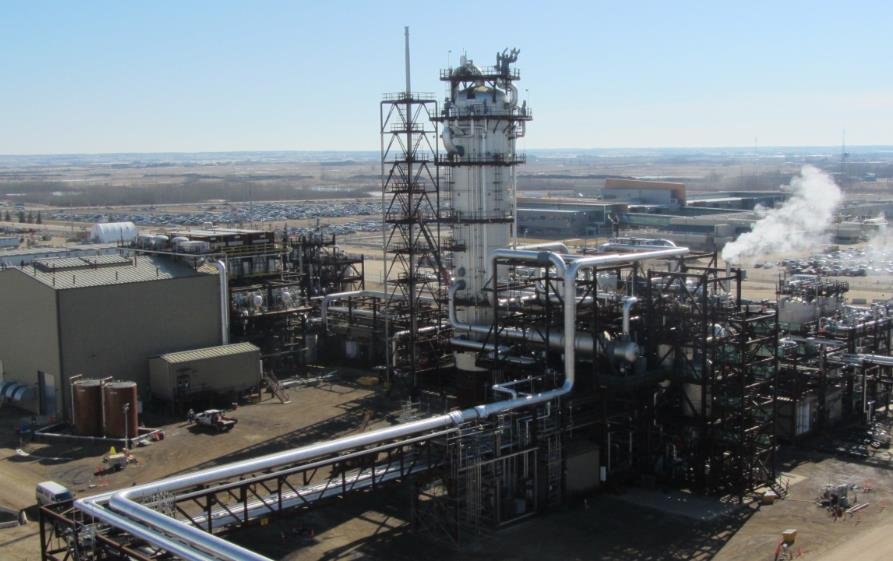Carbon capture and storage (CCS) is a technology that aims to reduce greenhouse gas emissions by capturing carbon dioxide (CO2) from large sources such as power plants and industrial facilities, and storing it underground in geological formations. CCS has been touted as a potential solution to mitigate climate change, but it also faces many challenges and uncertainties. How effective is CCS in reducing emissions, and what are the risks and costs involved?
According to the International Energy Agency (IEA), CCS could contribute to about 14% of the global CO2 emission reductions needed by 2050 to limit global warming to 1.5°C. CCS could also enable the production of low-carbon hydrogen from natural gas or coal, which could be used as a clean fuel for various sectors. Additionally, CCS could enhance the removal of CO2 from the atmosphere by combining it with bioenergy (BECCS) or direct air capture (DACCS), creating negative emissions.

Some of the advantages of CCS are:
- It can be applied to existing and new facilities, reducing the need for retrofitting or replacing infrastructure.
- It can capture up to 90% of the CO2 emitted from a source, depending on the capture technology and the type of fuel used.
- It can utilize existing oil and gas reservoirs or saline aquifers for CO2 storage, which are widely available and have large capacities.
- It can create economic opportunities and jobs in the energy and industrial sectors, as well as in the CCS supply chain.
The challenges of CCS
Despite its potential, CCS also faces many barriers and limitations that hinder its deployment and scale-up. Some of the challenges are:
- It is expensive and energy-intensive, requiring additional capital and operational costs, as well as reducing the efficiency and output of the source facility.
- It is not widely proven or commercially viable, with only 26 large-scale CCS projects operating globally as of 2020, capturing about 40 million tonnes of CO2 per year. This is far below the IEA’s target of capturing 5.6 billion tonnes of CO2 per year by 2050.
- It is not risk-free, as there are uncertainties and concerns about the long-term safety and integrity of CO2 storage, as well as the potential environmental and social impacts of leakage, migration, or displacement of CO2 or other fluids.
- It is not a silver bullet, as it does not eliminate all the emissions from a source, nor does it address the emissions from other sectors or activities that are not suitable for CCS. Moreover, it does not reduce the dependence on fossil fuels, which could undermine the transition to renewable energy sources.
The future of CCS
CCS is a complex and controversial technology that has both supporters and critics. Some argue that CCS is essential and feasible to achieve the climate goals, while others contend that CCS is ineffective and undesirable, and that the focus should be on reducing the demand and supply of fossil fuels. The reality is likely somewhere in between, as CCS could play a valuable role in some sectors and regions, but it is not a panacea for all the emission sources and scenarios.
The future of CCS will depend on several factors, such as:
- The level of ambition and commitment of governments and stakeholders to implement policies and incentives that support the development and deployment of CCS, such as carbon pricing, regulations, standards, and subsidies.
- The availability and accessibility of funding and financing for CCS projects, especially in developing countries and emerging economies, where the need and potential for CCS are high, but the resources and capacities are low.
- The advancement and innovation of CCS technologies, especially in terms of reducing the costs and improving the performance and reliability of capture, transport, and storage systems.
- The engagement and acceptance of the public and communities, especially in the areas where CCS projects are planned or implemented, as well as the involvement and collaboration of the industry and academia, to ensure the transparency and accountability of CCS operations and outcomes.
CCS is a technology that has been around for decades, but it has not lived up to the hype so far. However, it could still have a role to play in the global effort to combat climate change, if it can overcome the challenges and seize the opportunities that lie ahead.
